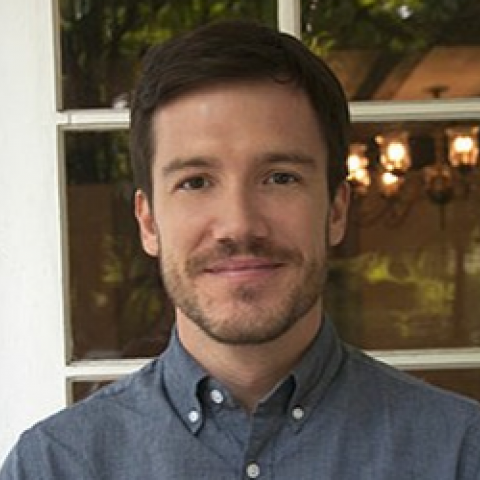Roger Beaty
Associate Professor of Psychology

-
140 Moore
University Park, PA - rub736@psu.edu
- 814-863-8524
Research Summary
The cognitive neuroscience of creative thinking and problem solving.
Huck Affiliations
Links
Most Recent Publications
Dynamic switching between brain networks predicts creative ability
Qunlin Chen, Yoed N. Kenett, Zaixu Cui, Hikaru Takeuchi, Andreas Fink, Mathias Benedek, Daniel C. Zeitlen, Kaixiang Zhuang, James Lloyd-Cox, Ryuta Kawashima, Jiang Qiu, Roger E. Beaty, 2025, Communications Biology
Creativity supports learning through associative thinking
Simone A. Luchini, James C. Kaufman, Benjamin Goecke, Oliver Wilhelm, Yoed N. Kenett, Daisy Lei, Mathias Benedek, Janet G. van Hell, Roger E. Beaty, 2025, npj Science of Learning
The role of the default mode network in creativity
Simone A. Luchini, Emmanuelle Volle, Roger E. Beaty, 2025, Current Opinion in Behavioral Sciences
A ‘Sweet Spot’ for Creative Ideation: Non-Linear Associations Between Semantic Distance and Creativity
William Orwig, Simone A. Luchini, Roger E. Beaty, Daniel L. Schacter, 2025, Journal of Creative Behavior
Envisioning the Future of Creative Thinking Assessment
Mathias Benedek, Roger E. Beaty, 2025, Journal of Creative Behavior
Evaluating overinclusive thinking: Development and validation of the Categorical Overinclusive Thinking Task (COverTT)
Paul V. DiStefano, John D. Patterson, Roger E. Beaty, 2025, Thinking Skills and Creativity
Enhancing creativity with covert neurofeedback: causal evidence for default-executive network coupling in creative thinking
Simone A. Luchini, Xinbing Zhang, Ryan T. White, Michael Lührs, Michal Ramot, Roger E. Beaty, 2025, Cerebral Cortex
What is creative in childhood writing? Computationally measured linguistic characteristics explain much of the variance in subjective human-rated creativity scores
Birsu Kandemirci, Roger E. Beaty, Dan Johnson, Bonamy R. Oliver, Yulia Kovas, Teemu Toivainen, 2025, Learning and Individual Differences
Associative Thinking and Creative Ability in Older Adulthood
Abigail L. Cosgrove, Michele Theresa Diaz, Paul V. DiStefano, Yoed N. Kenett, Roger E. Beaty, 2025, Creativity Research Journal
Effects of Combined tDCS-tRNS Over the Left Prefrontal Cortex on Convergent Thinking After 24 Hours
Javier Peña, Roger E. Beaty, Makii Muthalib, Irune Pérez, Agurne Sampedro, Olaia Lucas-Jiménez, Naroa Ibarretxe-Bilbao, Natalia Ojeda, 2025, Creativity Research Journal
Most-Cited Papers
Creative Cognition and Brain Network Dynamics
Roger E. Beaty, Mathias Benedek, Paul J. Silvia, Daniel L. Schacter, 2016, Trends in Cognitive Sciences on p. 87-95
Robust prediction of individual creative ability from brain functional connectivity
Roger E. Beaty, Yoed N. Kenett, Alexander P. Christensen, Monica D. Rosenberg, Mathias Benedek, Qunlin Chen, Andreas Fink, Jiang Qiu, Thomas R. Kwapil, Michael J. Kane, Paul J. Silvia, 2018, Proceedings of the National Academy of Sciences of the United States of America on p. 1087-1092
Default and Executive Network Coupling Supports Creative Idea Production
Roger E. Beaty, Mathias Benedek, Scott Barry Kaufman, Paul J. Silvia, 2015, Scientific Reports
Automating creativity assessment with SemDis: An open platform for computing semantic distance
Roger E. Beaty, Dan R. Johnson, 2020, Behavior Research Methods
Openness to experience and awe in response to nature and music: Personality and profound aesthetic experiences
Paul J. Silvia, Kirill Fayn, Emily C. Nusbaum, Roger E. Beaty, 2015, Psychology of Aesthetics, Creativity, and the Arts on p. 376-384
Network neuroscience of creative cognition: mapping cognitive mechanisms and individual differences in the creative brain
Roger E. Beaty, Paul Seli, Daniel L. Schacter, 2019, Current Opinion in Behavioral Sciences on p. 22-30
The neuroscience of musical improvisation
Roger E. Beaty, 2015, Neuroscience and Biobehavioral Reviews on p. 108-117
Creative constraints: Brain activity and network dynamics underlying semantic interference during idea production
Roger E. Beaty, Alexander P. Christensen, Mathias Benedek, Paul J. Silvia, Daniel L. Schacter, 2017, NeuroImage on p. 189-196
Personality and complex brain networks: The role of openness to experience in default network efficiency
Roger E. Beaty, Scott Barry Kaufman, Mathias Benedek, Rex E. Jung, Yoed N. Kenett, Emanuel Jauk, Aljoscha C. Neubauer, Paul J. Silvia, 2016, Human Brain Mapping on p. 773-779
Brain mechanisms associated with internally directed attention and self-generated thought
Mathias Benedek, Emanuel Jauk, Roger E. Beaty, Andreas Fink, Karl Koschutnig, Aljoscha C. Neubauer, 2016, Scientific Reports
News Articles Featuring Roger Beaty
Dec 01, 2020
Making Connections: Psychologist explores the neuroscience of creativity
Is there anything more mysterious — or human — than the creative impulse? Whatever the field of endeavor: music, art, science, business… What accounts for the inspired burst of innovation? The spark that flits to flame and lights the way to something entirely new?
Full Article
Aug 13, 2019
NSF grant to fund research on brain activity and scientific creative thinking
Roger Beaty, assistant professor of psychology and director of the Cognitive Neuroscience of Creativity Lab in the Penn State Department of Psychology, has received a $1.1 million grant from the National Science Foundation (NSF) along with co-investigators from two other institutions to collaborate on a project aimed at understanding and measuring creativity in the context of science.
Full Article
May 22, 2019
Creative Types Reserve a Special Corner of the Brain for Dreaming Big
Artists, novelists, actors and directors excel at tapping into “imagination” circuits
Full Article